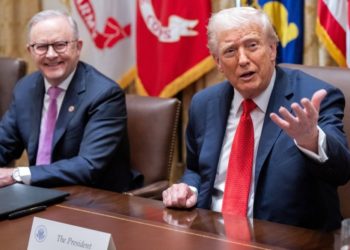The Central Committee of the Communist Party of China (CPC) convenes behind closed doors in Beijing this week for its fourth plenary session, with charting a five-year plan for the country’s social and topping the agenda.
Right now, there are many structural issues with the economy that need to be addressed, and analysts say Chinese policymakers are balancing efforts to spark consumer spending, while at the same time stimulating growth for developing high-tech industries.
For decades, the world’s has been driven by export trade and infrastructure investments, while the third pillar, domestic consumption, has been neglected.
As China’s export and infrastructure engines sputter, stimulating domestic consumption has taken on more urgency.
“The mood among private families and consumers in China is very gloomy,” said Alexander Brown, a China analyst from the Mercator Institute of China Studies (MERICS), a Berlin-based think tank. “Nevertheless, Beijing will spend its money primarily on industrial policy in view of the current geopolitical situation and China’s goal of resilience.”
Building high tech vs. helping households
One of the top strategic challenges for Beijing coming from the under President Donald Trump is access to advanced semiconductor technology, critical to powering strategic industries.
The most advanced chips continue to be built by US firms like Nvidia, which has been at the center of on the processing power of chips that can be delivered to the Chinese market.
For China, is critical. Last week, Trump also renewed threats of triple digit tariffs on Chinese imports, after Beijing hinted it would place greater .
As Washington continues to try and , geopolitical competition is simply a greater concern for Beijing than structural problems with the economy, Chen Bo, senior research fellow at the National University of Singapore’s East Asian Institute, told Reuters news agency.
Chen said the policy document that comes out of the plenary session due to end on October 23 will “emphasize, and re-emphasize, support for high-tech research and industrial development.”
The analyst said manufacturing remains a “top priority” in terms of China’s hard power.
“When conflict arises, what ultimately matters is manufacturing, not services,” Chen said.
However, supporting the development of high-tech industries with government support means there will be fewer resources left over to be directed at stimulating consumer spending.
Xi’s vision of the future
In July, Chinese President emphasized in a speech that the world is “currently undergoing its most profound changes in a century, with the scientific and technological revolution and competition between the major powers becoming increasingly intertwined.”
Xi also renewed calls for China to take a leading role in developing science and technology.
China is already a world leader in sectors like electric mobility and .
And, with the exception of a few areas such as semiconductors and , China has almost completely established its entire supply chain within its borders.
is also continuously increasing its investments in high-tech industries in order to further strengthen its economic sovereignty and reduce its dependence on the few sectors where it doesn’t already dominate.
How can Beijing stimulate consumption?
However, Beijing has not completely given up on tackling the structural problems in its economy.
At a session of the People’s Congress in September, discussions were held on how to increase the disposable income of private households and the share of consumption in the economy.
Private consumption in China currently accounts for around 40% of economic output, far less than the 60% in Western countries — in the US, the figure is as high as 70%.
Some Chinese think tanks have proposed increasing private consumption to 50% within 10 years.
In recent months, Beijing has already announced measures such as consumer subsidies, pension increases, and childcare allowances, and has made some improvements to social security.
MERICS analyst Brown believes that these steps have been essentially “forced” by problems such as demographic change, overcapacity, and declining exports.
“I believe that such measures, albeit not many, will continue to be taken over the next five years,” he told DW.
Larry Hu, chief China economist at Macquarie Group, told Reuters that he expects Beijing will take action on stimulating domestic consumption when it becomes clear that external demand has contracted enough to threaten growth targets.
“If you only rely on external demand and domestic demand is not working, then you will have unemployment problems and also deflation,” he said. “If it continues like this for one or two years, it’s still okay. But in the long run, it will definitely be a problem.”
After all, stimulating domestic consumption is anything but cheap, especially at a time when Beijing’s financial leeway is already limited due to a real estate crisis, high debt levels, and lower growth rates.
According to Citigroup, the Chinese government would need to invest 20 trillion yuan (equivalent to $2.81 trillion) over the next five years to truly address the imbalance between supply and demand in the Chinese economy. This would be equivalent to 15% of China’s GDP in 2024.
Analyst Brown from MERICS said that for the time being, this means Beijing will prioritize directing resources to industry, where it sees a chance for growth now.
“They will continue to invest resources primarily in technology industries where there is an opportunity to become a world leader. The hope is that these achievements will generate a lot of money. This money, or tax revenue, can then ultimately be distributed throughout the entire economic system,” he said.
This article has been translated from German
The post China: New 5-year plan comes at critical economic crossroads appeared first on Deutsche Welle.




